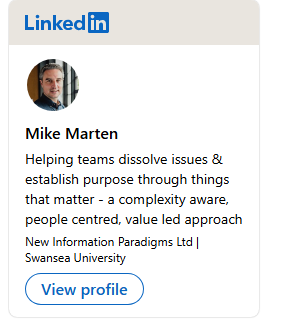What “ARC” Means: the ARC Perspectives
“ARC” is the “branding” we’ve given our ARC Diagnostics – our online framework and platform for secure and rapid spreading and scaling of Diagnostic processes – but what does “ARC” mean and how is it useful? Let’s find out.
“ARC” refers to the fact that nearly all organisations – whilst varying greatly in size, geographical scope, structure and culture – can be usefully considered as consisting of three broad “perspectives”:
- Alignment: “formal” leadership, “top-down”, the domain of vision, strategy and resource allocation, with responsibility for setting direction, leading and inspiring.
- Resilience: management of best practice, “middle-out”, the domain of developing capability, capacity and compliance, and responsibility for “grounding” strategy into result-producing behaviour, supporting and empowering front-line teams.
- Coherence: producer of front-line results, “bottom-up”, maybe arranged in business units, the domain of execution and performance, with responsibility for delivering results and feedback from the “real world”.

Most individuals will also have a centre of gravity in one of these perspectives, and they are also helpful for locating where challenges are most typically and keenly experienced.
In particular, as the biggest challenge facing organisations today is that of Complexity, symptoms of that challenge – or of ineffective responses to it – can also be associated with these perspectives: whilst some symptoms are general and apply across the board, most relate to one of them.
And so ARC Diagnostics aim to bring together, serve and harmonise all three perspectives – thereby helping organisations achieve “alignment”, “resilience” and “coherence”.
Let’s now look at each perspective in more detail:
Alignment
The Alignment perspective is that of “formal” leadership – often with several levels of hierarchy – from where vision, strategy and resource allocation cascade “top-down”:

Individuals focused on the Alignment perspective are responsible for setting direction, leading and inspiring, with particular focus on the following result-producing areas:
- Sensing and adapting to complex market signals and changes.
- Culture: establishing and embedding identity, values, beliefs and behaviours.
- Formulating strategy, setting targets and gauging top-level progress.
- Planning, initiating, and managing priorities across programmes and portfolios.
Ultimately accountable for their organisation and its performance – to partners, shareholders, media and the public – they perhaps most directly feel the impact of complexity itself, but they are also often responsible for the approaches taken, which are then felt keenly by the Resilience and Coherence perspectives.
Resilience
The Resilience perspective is that of managing best practice – often within teams for training, compliance, etc, that have responsibilities that cut across the structure of the organisation at the front line – from where capability, capacity and compliance are propagated “middle-out”:

Individuals focused on the Resilience perspective are responsible for “grounding” strategy into result-producing behaviour, and supporting and empowering front-line teams, with particular focus on the following result-producing areas:
- Developing and ensuring capability of people, processes and resources.
- Establishing, spreading, scaling and demonstrating the value of best practice.
- Managing and measuring governance, compliance and risk.
Ultimately accountable to the Alignment perspective, they also need to demonstrate value to Coherence perspective, so are often caught between trying to implement the approach decided by leadership and experiencing the impact of complexity at the front line.
Coherence
The Coherence perspective is that of producing front-line results – often when organised into departments, divisions or business units with varying levels of interaction between them – and where feedback from the “real world” flows “bottom-up”:

Individuals focused on the Coherence perspective are responsible for execution, performance and realising measurable results, with particular focus on the following result-producing areas:
- Deploying resources to ensure effective performance and achieve outcomes.
- Managing accounts and developing relationships with stakeholders.
- Reacting to and managing key issues and opportunities
As with the Resilience perspective, ultimately accountable to the Alignment perspective, with which they often have an uneasy relationship, caught between trying to achieve targets in the midst of Complexity whilst using the approaches given to them from elsewhere in the organisation.

